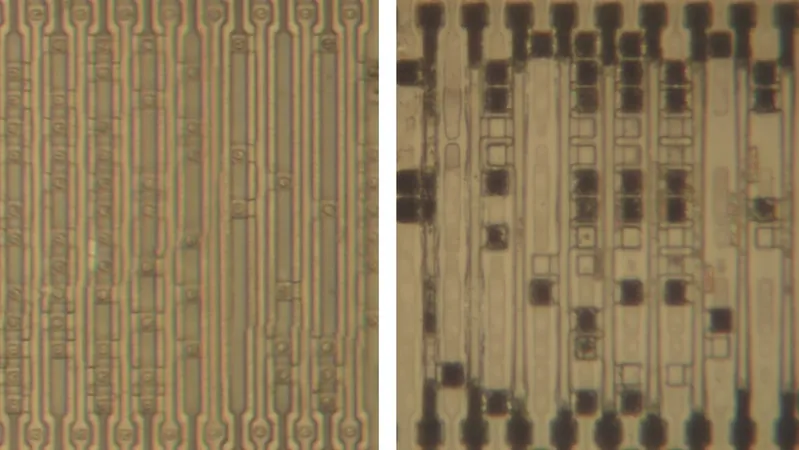
Unraveling the Infamous Pentium FDIV Bug: A Tech Catastrophe That Shook Intel to Its Core!
2024-12-29
Author: Ling
Introduction
The early 1990s marked a pivotal moment in the world of personal computing as computers began to surge into the limelight. This era was heavily influenced by fierce competition among tech giants like Intel and AMD, who engaged in massive advertising campaigns to foster brand loyalty—who could forget the catchy slogan “Intel Inside”?.
The Launch of the Pentium Chip
In 1993, Intel launched their groundbreaking Pentium chip, generating enormous excitement. However, amidst the hype, an obscure but significant flaw was unearthed within the floating-point division module of the processor, sparking one of the most notorious technical blunders in computing history.
Discovery of the FDIV Bug
This critical error, dubbed the FDIV bug, came to light thanks to Dr. Thomas R. Nicely, who discovered the defect while searching for prime numbers. The fallout from this bug caused a considerable upheaval for Intel, with many users experiencing erroneous calculations.
Understanding the FDIV Bug
The intricacies of the FDIV bug lie in how the Pentium chip executed floating-point division. Rather than employing a straightforward arithmetic approach, the Pentium relied on a lookup table facilitated through a programmable logic array (PLA) embedded in the chip's design. This means that during division operations, the chip would reference pre-stored values to generate results.
The Nature of the Flaw
Unfortunately, five crucial entries were missing from this table. Analysis conducted by expert Ken Shirriff following the incident revealed that these missing values pointed towards defects in the PLA. Interestingly, Shirriff suggests that the bug’s characterization as merely a transcription error was somewhat misleading. The pattern of absent entries aligns more closely with a computational mistake in the algorithm used to create that lookup table.
Aftermath and Consequences
The aftermath of the Pentium FDIV bug was nothing short of a public relations debacle and an important case study in crisis management—or rather, how not to manage a crisis. As this was an unprecedented situation for Intel, the company found itself navigating uncharted waters without a clear strategy. The fallout included an extensive recall of affected chips, a $475 million write-down, and significant damage to Intel's reputation.
Conclusion
In the grand scheme of tech history, the Pentium FDIV bug serves as a fascinating lesson—one that highlights the delicate balance between innovation and reliability in the tech industry. If you’re keen on diving deeper into the nuances of floating-point mathematics and the story behind this colossal blunder, don't miss the chance to explore expert analyses and accounts that shed light on a chapter where silicon dreams turned into an engineering nightmare! This unfortunate event not only impacted consumers and companies; it also lodged itself firmly in the annals of tech lore, serving as a cautionary tale as the industry geared up for an era defined by ever-increasing complexity in computing.
 Brasil (PT)
Brasil (PT)
 Canada (EN)
Canada (EN)
 Chile (ES)
Chile (ES)
 Česko (CS)
Česko (CS)
 대한민국 (KO)
대한민국 (KO)
 España (ES)
España (ES)
 France (FR)
France (FR)
 Hong Kong (EN)
Hong Kong (EN)
 Italia (IT)
Italia (IT)
 日本 (JA)
日本 (JA)
 Magyarország (HU)
Magyarország (HU)
 Norge (NO)
Norge (NO)
 Polska (PL)
Polska (PL)
 Schweiz (DE)
Schweiz (DE)
 Singapore (EN)
Singapore (EN)
 Sverige (SV)
Sverige (SV)
 Suomi (FI)
Suomi (FI)
 Türkiye (TR)
Türkiye (TR)
 الإمارات العربية المتحدة (AR)
الإمارات العربية المتحدة (AR)